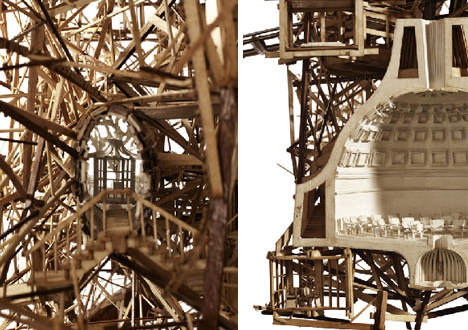project09:Frontpage
Rosanne le Roij
Omnifarious Architecture
The notion of architecture being able to adapt to it’s surroundings and responding to a demand generates a lot of opportunities for future architecture. Buildings could be able to expand, rearrange or morph into something new. Which results in public spaces that are constantly changing and highly adaptable. But how can we create a building that embodies this? Within my graduation project I would like to give shape to this idea.
Location
Context
Located at the Campus of Delft University of Technology, the library will create the missing link between the city of Delft and it’s inhabitants and the campus within Delft. There has always been a division between the city and the university’s campus, and within the policy of the University a strategy has been developed to contribute more to the city. This library could generate that and bring academics and inhabitants together.
Delft University of Technology has been part of Delft since 1842, but has since than grown into an institute that holds around 24.500 people, which is a massive rate compared to the population of Delft (96.168 people). Because of it’s size, new buildings had to be built to handle the capacity and substitute the old university buildings within the city centre and a campus was created. The problem with the campus in regards to the city is that it’s completely cut off from the city and its inhabitants. And creates a beacon for the city of Delft of which inhabitants don’t feel included and therefore they don’t feel unity between them and the university and its students.
Positive aspects for students
More than enough facilities are accessible at the campus during weekdays, faculties are open from 08.00 until 22.00. and therefore the University library is never full. But after those hours and during weekends, the University library is overflowing with students. Cramped up in a building that ins’t quite able to handle this capacity. This results in unpleasant studying & climate conditions and a less higher concentration level of students because of acoustics. A few changes have been made within the campus to handle this capacity problem, the Aula has been opened as a studying place during the weekends, but these are temporarily solutions.
This increase of students studying longer and more days on campus is detected over the whole of the Netherlands. Earlier this year a research has been conducted to get an overview about the motivation of students that has resulted in campuses not being able to handle the capacity and therefore overcrowding. The consequences behind all this is are a merge of three new developments. First of all, today’s society is getting more busy, we are constantly in contact with acquaintances through social media, our phone, the accessibility of internet and therefore are easily distracted from our responsibilities. Therefore we tend not to work or study at home anymore and find places where we can work in peace and have some kind of a social pressure to get ourselves stimulated. Second of all, Dutch students are and have been for quite some time THE students group within the world that have the longest academic careers. And since society is getting more and more globalised this isn’t acceptable anymore. Therefore universities have taken on measures to make students finishing their academic careers faster (a BSA in first and/or second year of studying of 60 or 45 Ect’s, Harde Knip). And last, as a result of the new implementation of the student loans form the government of the Netherlands, costs are getting significantly higher to study.
